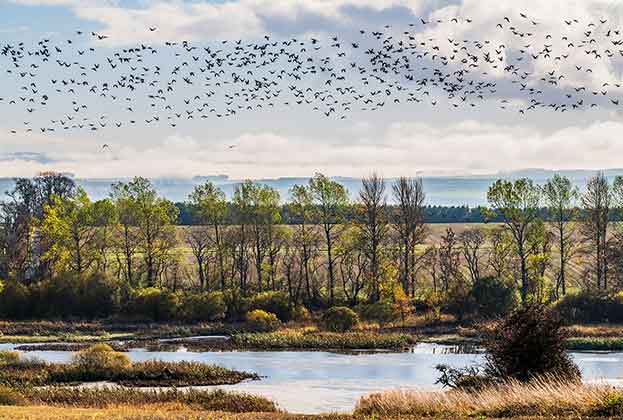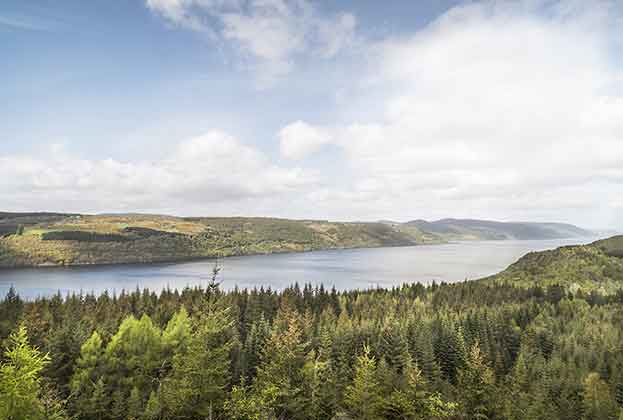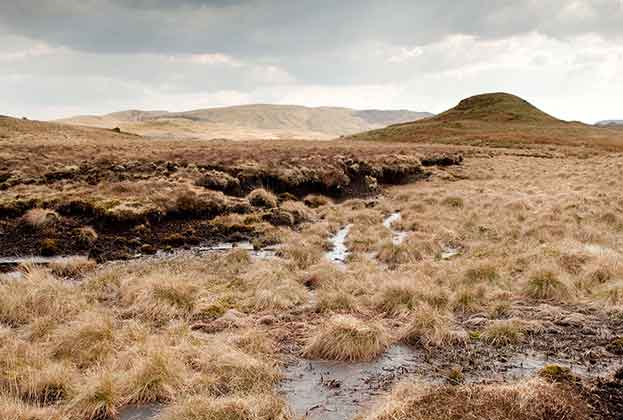New income streams and emerging markets are developing as the demand for ecosystem services increases
Natural capital: protecting and enhancing rural assets
Natural capital is gaining increasing traction as a theory and a practice influencing how land is managed in the UK. For farmers and land managers, the important element is not so much natural capital itself, but the value of the ecosystem services that the land can provide. This report focuses on some key areas where natural capital thinking is creating new income streams, as well as looking ahead to emerging markets for ecosystem services.
Natural capital can be understood as the world’s stock of natural resources – earth, air, water and all the components that are linked with them, such as trees, minerals and peat bogs to name but a few
Savills Rural Research
Natural capital can be understood as the world’s stock of natural resources – earth, air, water and all the components that are linked with them, such as trees, minerals and peat bogs to name but a few. The asset value of UK natural capital is estimated to be nearing £1 trillion (ONS 2019).
These natural assets have not typically been recorded on balance sheets at either national or business level, which has led to them being undervalued in financial decision making. Increasing political urgency around the effects of climate change and biodiversity loss has led to growing concern over environmental stewardship. Future government policy will be assessed against natural capital principles and so it is important that, as landowners and managers, we understand the concept and the opportunities it brings.
Natural capital can be used to deliver ecosystem services to benefit society. Ecosystem services include the sequestration of carbon by trees and soil, the filtering of water, the health benefits of public access to green space, the wildlife conservation of habitats with high levels of biodiversity and the flood prevention provided by flood plains and peatland.
Payments for ecosystem services are made to the ‘manager’ of the natural capital to provide the ecosystem service. Many services are currently provided without charge, but we expect that as public money for public goods and the polluter pays principles become more established so will the demand for ecosystem services and the development of an associated market.
Opportunities to deliver these services to third parties take various forms:
- Environmental Land Management Scheme (ELMS) was proposed in the 25 Year Environment Plan and mandated in England in the 2019 Agriculture Bill. This scheme is intended to replace the Basic Payment Scheme of the Common Agricultural Policy. ELMS is founded on the principle of public money for public goods – a natural capital valuation approach. The payments are likely to include money for improved air, water, rich habitat biodiversity and soil quality, carbon sequestration, public access to the countryside and measures to reduce flooding.
- Private environmental agreements have been pioneered by water companies and planning authorities who have worked out that it is more cost-effective to pay land managers to alter management techniques in order to avoid pollution that is difficult or expensive to remove later. We are expecting flood alleviation and prevention schemes to become more prevalent and offsetting agreements to increase as the polluter pays principle gains political traction. These agreements are highly location specific, so landowners will need to understand who locally may benefit from the services they can supply.

Case study: nutrient neutrality in the Solent
Offsetting the impact of nutrient levels in marine environments through private environmental agreements
The marine environment within the Solent region is internationally recognised and protected for its important wildlife. Excessive levels of nitrogen and phosphorus, found in wastewater from housing and agricultural run-off leaching into the Solent, have led to eutrophication and large scale algal blooms. This has serious consequences for native bird species and marine life.
In 2018, a European Court of Justice judgement was issued that led to Natural England advising planning authorities in the Solent catchment area that planning permission should not be granted unless the development could be proven to be ‘nitrate neutral’. This means as much existing nitrogen must be removed from a catchment as the new development would create, before development can go ahead. It has been estimated that 10,000 proposed homes are currently on hold across the Solent catchment district. The need for nitrate neutrality will have a significant impact on future housing delivery and meeting local housing needs.
Areas at risk:
This issue may affect any of England’s 82 EU designated Special Protection Areas, but following areas are deemed to be at high risk:
- River Mease Special Area of Conservation (SAC) in the Midlands
- River Clun SAC in Shropshire
- Fenlands SAC in Cambridgeshire
- Areas along the River Avon
- Poole Harbour
Mitigating circumstances
Land managers could be critical in finding a solution. Developers need to look for agricultural land practices that can offset the development’s impact on nutrient levels. This mitigation may then enable planning applications to be approved.
Natural England has suggested that the three key principles for the viability of offset land are: certainty in the land’s mitigation potential, perpetuity (of over 80 years) in the offset and enforceability of the mitigation measures. The long duration of these agreements means that private owners are well placed to guarantee compliance with the new practice, such as converting a steep, unproductive area of land adjacent to a watercourse into woodland, which would reduce nutrient run-off from the land. This mitigation would be enforceable via felling licences. Other examples include the creation of wetlands and rewilding of streams for nitrate credits. These solutions would enable remaining land to continue to be farmed productively.
Finding a solution is complex and will require a united approach from stakeholders. Currently, there is a lack of formal policy around nutrient offsetting procedures and compliance, which may result in private agreements leading the marketplace, offering substantial new income streams from landowners’ natural capital assets.
Quantifying natural capital: whole estate reporting
In order that landowners and managers make the most out of the opportunities of emerging natural capital markets, it is crucial that they have quantifiable information on their natural capital stocks. From this year, Savills will offer bespoke whole estate reporting that delivers triple bottom line data – environmental, social and economic – on rural assets.
Read the articles within Spotlight: Natural Capital below.
.jpg)


